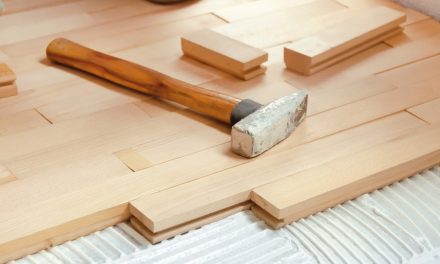It’s time to move on from traditional sawmilling and embrace added value and sustainability, says expert Curly Tatnell.
For decades, Dale and Meyers has been one of Queensland’s largest and most respected timber operations. Growing out of a smaller traditional milling background, the company now provides direct work for some 220 people and produces high-quality timber products for builders, landscapers, renovators and more. But, says Curly Tatnell, Director of Dale and Meyers, going on as they have been isn’t an option.
“The hardwood industry is changing,” Tatnell says. “What we’ve done here for the last 150 years or more is not going to be around for much longer. I probably give it five to ten years and it will be a totally different world altogether. So we’ve got to change, too.”
He recently pinpointed two key areas for change in his business. The first was in growing their product range. “I see the future of hardwood more in decorative material and value-added material rather than structural,” he says.
The second was environmental, an issue that has long concerned Tatnell. “With our native hardwoods, our recovery rate that we reliably bring to the mill is somewhere between 36 and 40 per cent recovery. Now that is not a great lot of resource out of a log. The rest is burned. I grew up in a farming community where you straightened bent nails and used them again. We knew the importance of utilising everything to its maximum. I used to think there’s got to be something better to do with that hardwood.”
Central to Tatnell’s concerns was increasing the returns on the mill’s work. “If you chase too hard to get the maximum out of a log, it then becomes uncommercial on your mainline mill benches to cut. There’s no point making three cuts on a bench for a $2 piece of wood, but there is a point if with three cuts on the right timber you end up with a $50 piece of wood.”
As Tatnell says: “I realised that I could set up another line from the mill which was a recovery line only, and put product and resource into that recovery line at no cost, because it would just be going to fire if I didn’t do something with it.”
MAKING RECOVERY PROFITABLE
The recovery line would take short and narrow pieces of wood, and others that weren’t suitable for the main production lines. He needed to solve two problems: what he could manufacture all that waste into, and how he could create a superior product that would be worth the capital and time investment. Thanks to the fact that Dale and Meyers already had a finger jointer on site, the second problem partially solved itself.
“We knew we could finger joint our shorter pieces into longer pieces,” says Tatnell. “But that didn’t give us the answer for all our product. So we looked at the next step and said, ‘Righto, if we get a laminating machine, we can laminate these lengths of timber that we’re producing out of our waste, we can glue them all together and we can make some very interesting, very nice products.’”
Tatnell and his team looked at gaps in the Australian market and their facilities and constructed a plan of attack for their expansion. They sourced specialised machinery in Taiwan for the recovery line and pressing and reconfigured part of the mill to manage the new workflow.
“We’ve probably put on an extra 16 to 18 people,” says Tatnell. “And they’re learning brand new skills. There’s a real art to it. You’ve got to get it right with the laminating, or you won’t get it at all. It’s not a matter of getting three or four pieces of timber, slapping a bit of glue on them and pressing and you’ve got a product, it doesn’t work that way.
“What we’re producing now is a range of very nice products, basically manufactured out of timber that would have gone to waste. We’re doing support posts, stair springers, step treads, laminated flooring, laminated tabletops, just to name a few. It’s all new and most of it is just coming into market at the moment, but we have a lot of buyers ready. We now have stocks in place and everyone who has seen the product looks at it and goes ‘Wow!’ It’s fairly exciting stuff and it’s expanding our market. There are very few people in Australia actually doing this sort of stuff.”
And as well as cementing the economic future of the company, Tatnell has hit his environmental targets. “We’ve increased our recovery to around about 46 per cent, which is a huge difference.” At a 15 per cent improvement over previous best recovery rates, it’s also a great marketing difference for Australian customers who are concerned about getting the best use out of our valuable natural resources.
LEADING THE WAY
Tatnell isn’t satisfied with just his personal success. He’s now embarked on a mission to encourage others to find their own ways to value add and ensure continued profitability. “It’s the future of the industry,” he says. “I’ve spoken at a couple of conferences and let people know that anyone who doesn’t have a finger jointer and/or laminating machine in their mills, within the next five and particularly next ten years probably won’t be in the hardwood sawmilling game.”
He knows it can be hard to change, but the rewards are substantial. “We had all the same problems. Our boys have been doing it the same way, some of them for 40 years, and getting them to adapt to new products and new techniques has been a difficult task, but we’re winning. It’s created jobs. Not only are we finger jointing and laminating, but we then follow through with more value adding in the form of tabletops, benchtops and specialty timbers.”
The recovery line has given Dale and Meyers a range of new products, and the first one to take off has been the laminated flooring. At 240mm wide and anything from 12-90mm thick, it’s available in whatever set lengths a renovator or builder requires. “It can be 3m, it can be 6m,” says Tatnell. “The length and the width decrease the time it takes you to lay the floor and gives it a whole new look. With your small laminates and the thickness of the laminating we can give you something different that’s not there on the market. Our board has variation right through the whole board and you can blend that across a whole floor or do specialty work where you have dark at one end and light at the other.”
The results are a sophisticated finish at a reasonable price, with superior lasting qualities and very minimal shrinkage and shift. And they’re opening up Dale and Meyers to a new range of buyers. Not bad for timbers that once would have been unusable scrap.
Visit daleandmeyers.com.au.











